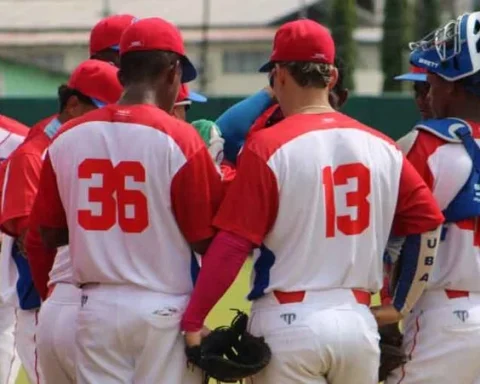Doctor, my dog has been vomiting for several days! This expression is usually heard almost daily in our consultations.
Every time an owner sees something come out of their dog’s mouth, be it food scraps or anything else, they tell you their animal is vomiting. He will never tell you that he is regurgitating.
If you tell him that he is regurgitating, he will probably assume that vomiting and regurgitation are the same thing. But as doctors, we know that he is not right. If we are not able to differentiate these clinical signs we are going to make mistakes.
In the dog and cat there is no reflex for regurgitation. Instead, there is the vomiting reflex. That is why you have to ask the owner to describe well what his animal does.
In regurgitation the dog may lie down. In the cat also although they are rarer pathologies in them.
When the animal is regurgitating, the pathology is probably in the mouth, pharynx, upper esophageal sphincter, or esophagus. The dog can also walk, it can go to eat, to drink and suddenly lower its head and arch; there the exit of the esophageal content takes place. Although, not all regurgitation is post ingestion; there may be regurgitation hours after eating. As in these cases there is no reflex to close or open the airways, food can be introduced into them and pneumonia can occur.
Instead, vomiting is a “reflex” mechanism. Here the animal presents nausea, restlessness, the mouth begins to fill with saliva, there may be ptyalism. But a series of contractions of the abdominal muscles also begin to appear with the exit of the gastroduodenal content through the mouth. As it is a reflex, the airway is closed. A vomiting animal can aspirate food but this usually occurs when they are unconscious or lying down. Sometimes they can even breathe in the vomit.
But if what the animal is doing is vomiting, we have to look for digestive pathologies that go from the cardia backwards in the digestive system or systemic pathologies. That is why it is important to define what the animal is really doing to know where we have to go to look for the problem.
Pathologies that cause regurgitation are much less frequent than those that cause vomiting and that is why we sometimes pay less attention to them.
What is dysphagia?
It is nothing more than the difficulty in swallowing. It can be caused by a neuromuscular disorder or by a pain disorder. When this difficulty exists, regurgitation may be present. But there are pathologies that cross with regurgitation even if there is no dysphagia or odynosphagia (dysphagia with pain).
Dysphagia is a clinical sign that can be detected very easily. The owner is sometimes able to tell that his animal has an inability to swallow. If there are doubts, the animal is given food or water and we can see if regurgitation occurs or not.
Causes of oral dysphagia:
. Hypoglossal or trigeminal injuries
. Decreased motility of the tongue
This pathology is very easy to recognize because we can see that the animal has difficulty swallowing but also has difficulty apprehending food.
Causes of pharyngeal dysphagia:
They can be intraluminal or parietal causes. They can be in the light or on the wall itself.
. Increased size of the tonsils either due to an inflammatory or tumor.
. Presence of foreign bodies.
. Pathologies of the pharyngeal wall itself.
They can also be extraluminal masses that compress the pharynx from the outside in, such as retropharyngeal abscesses, lymphoma when the nodes are enlarged, and there may also be tumors.
Causes of pharyngeal dysphagia of neurological origin
. Trigeminal Neuropathy – Facial – Glossopharyngeal – Vagus which are the cranial nerves that innervate the entire area of the pharynx
. Myasthenia gravis
. CNS lesions (swallowing is to this system)
. hydrocephalus
When we have edema in the pharynx, either due to a foreign body or due to trauma, there may be pharyngeal dysphagia. Dogs sometimes fight and get bruises or abscesses on that spot. But when there is also pharyngeal dysphagia due to intraluminal or extraluminal masses, we can say that there is dysphagia and odynophagia.
But when there are neuromuscular alterations we will only be in the presence of dysphagia. There is no pain on swallowing, it is only a neurological disorder.
Another pathology that causes dysphagia and regurgitation is Cricopharyngeal Dysphagia, which can be congenital or acquired. The congenital occurs rather in breeds such as Cocker Spaniels or Poodles, although it can occur in any breed or mestizo.
It can also be acquired by hypertrophy or myositis of the cricopharyngeal muscles. Due to trauma, neoplasms or neurological disorders.
In this dysphagia, what is observed is a lack of coordination between the contraction of the pharynx and the relaxation of the upper esophageal sphincter. The first contracts so that the second opens and passes the food. This is how it should work normally. In this type of dysphagia, what will happen is that the pharynx contracts, the sphincter remains closed, it continues to do so several times until coordination is achieved at some point. In this pathology, the alteration can occur in one or all of the swallowing movements.
Clinical signs of Cricopharyngeal Dysphagia:
In smaller puppies, regurgitation episodes occur after ingestion. They may be seen during the nursing stage, where the puppies regurgitate when they feed and we see milk coming out of their noses.
If it happens in an adult, what we see is weight loss plus regurgitation, dysphagia and repeated swallowing movements. Here the appetite is variable although they are animals that are going to have a great appetite because they are always malnourished. When we find them without appetite there may be a possibility that they have aspiration pneumonia with associated cough and dyspnea. The difficulty can become so severe that they may not be able to swallow their own saliva and there may be ptyalism. There is halitosis and nasal discharge because food remains in the nose that are contaminated with bacteria.
The definitive diagnosis for this pathology is through radioscopy.
To define a treatment, it is concluded whether it is congenital or acquired. When it is the first thing that is done is the cracopharyngeal myotomy. The upper esophageal sphincter is left more open.
When it is acquired, the cause must be sought.
Causes of regurgitation:
megaesophagus
esophagitis
Strange bodies
esophageal strictures
motor abnormalities
intussusception
The vomiting patient:
The center of vomiting is located in the Medulla Oblongata and this is produced by the stimulation of a group of neurons located there. Vomiting can be stimulated neurally or humorally.
When we are presented with a patient with vomiting, the first thing to do is differentiate between vomiting or regurgitation. For this, several things must be taken into account.
If the vomiting is food-related and occurs after eating food, it can be thought of as acute gastritis, whether of infectious, toxic, caustic origin or due to dietary abuse.
If the vomiting is food and occurs more than 12 hours after ingestion, it can be thought of gastric retention, motor disorders or a process of physical obstruction at the pyloric level.
If the vomiting is not food-related and is not related to eating, systemic diseases, gastric obstruction or proximal intestinal obstruction can be considered. It can also be caused by drugs, toxic substances. But if the vomiting is intermittent, one can think of chronic gastritis or also a distal intestinal obstruction. The latter refers to the ileum.
What characteristics does vomiting have?
When blood appears that may be fresh or digested, it should be thought that there is an injury to the gastric mucosa. We must also know that not only antiemetics should be used but also antacids and mucosal protectors.
If the vomit is fecaloid, it is very likely that the animal has an obstruction in the digestive system. The rarest thing may be that you have a meso torsion or necrosis. Here we must always think of obstructive processes.
If the vomiting is non-productive, that is, the animal has all the mimicry of vomiting and nothing comes out of the mouth, one option is that it is highly vomiting and that there is no time for gastric desiccation to spread in the stomach and throat. another that is a Gastric Dilation Torsion Volvulus (DTGV).
When a patient presents with vomiting, the species, race, sex and age must also be taken into account.
In the anamnesis it is important to ask if he is vaccinated, dewormed, what his diet is, his habitat and if he lives with other animals and if there are other clinical signs. Then the general and particular objective examination is done.
Keep in mind that animals when they are young play with anything and can ingest foreign objects.
Chronic diarrhea and weight loss can also be found with vomiting.
When we talk about vomiting we may or may not be facing a primary pathology. If we see it destroying stones or any foreign object, perhaps we are facing a primary pathology, but if not, we must carry out the corresponding tests.
Cats are not as active animals as dogs. We can find the latter in the intestines from a mango seed to children’s toys or coins, and I say this from my own experience. For this reason, special care must be taken with young animals or animals that live in a stressful environment that leads them to eat the first thing in front of them.

















